Listening as a Board Competency: Strategy Input
As nonprofits, there are a number of universal areas of oversight where a Board of Directors needs to function – domains that include fiduciary, legal, strategy in all its iterations (vision, direction, planning, accountability, transmission), and governance/volunteer models. In their role, Boards are brought together in meetings, receive reports, dialogue on key topics, and make decisions that ultimately create the path that the organization will pursue. What is all too often missing are ongoing lines of input that expand the Board awareness of what is happening in the field and within the organization outside of their own perspective and network. This is the first in a series of articles on the need to develop listening as a board competency.
Strategic planning is part and parcel of the Board experience. Though methodology may vary, some areas they may focus on include creating a future vision for the organization, align the current mission/vision, focus on the audiences the organization needs to prioritize, their representative needs, and the solutions the organization is best fit to provide. A key step that is all too often missing in the strategy process is providing the Board with varied sources of input to the strategic conversation they have during planning. While for some organizations this need is fulfilled by environmental scans or member satisfaction surveys, these methods – while providing an accurate snapshot of a moment in time – don’t account for ongoing shifts in our ever-changing environment. If in their planning we want our Boards to be considering perspectives besides their own, we need to better seed the avenues of input where they can choose to listen.
One example of how to do to solicit broader strategy input comes from The American Institute of Chemical Engineers (AIChE). AIChE recently provided an open call for input into their upcoming strategic planning work through an online survey. While the deadline has passed, you can see how they framed it here. There are a few interesting points to note:
· They are explicit about the channels where they are seeking input: The information is being solicited through several vehicles, including focus groups (via Webex), Engage discussion questions, and this survey.
· They are not only looking for member input: AIChE is seeking input from current members, potential future members, and stakeholders. AIChE invites all chemical engineers and bio-related engineers across industries and specializations — as well as student engineers and stakeholders in allied professions — to complete this survey.
· They are explicit in where they are seeking input:
Trends that impact our profession and the industries in which we work and study
What chemical and bio-related engineers — at all career levels — want from a professional society
Products and services sought by members and customers
Membership needs and professional concerns of specific member types — including students, young professionals, and graduate students
Strengths and weaknesses of AIChE
AIChE’s role in government policy
They are also explicit in the input commitment: Clicking on the link below will take you to a survey where you'll be asked to complete up to six questions.
It will be interesting to hear what kind of response they receive from which audiences, and how that shapes the strategy they craft – but even the premise, that there is something to learn and listen to from the community at large, will start their strategy work from a broader perspective.
Take-away questions to think about from this approach:
- Should an organization’s strategic vision and plan be for the membership, or with the membership? The American Chemical Society attempts the latter with their summary of the goals in their plan, what they have achieved, and a tab for each where members can get involved in pursuing continued success.
- In an age of too-many-surveys, how can your organization solicit continual feedback and insight loops that don’t get lost in the survey-clutter, and aren’t single snapshots in time like environmental scans or member satisfaction surveys?
